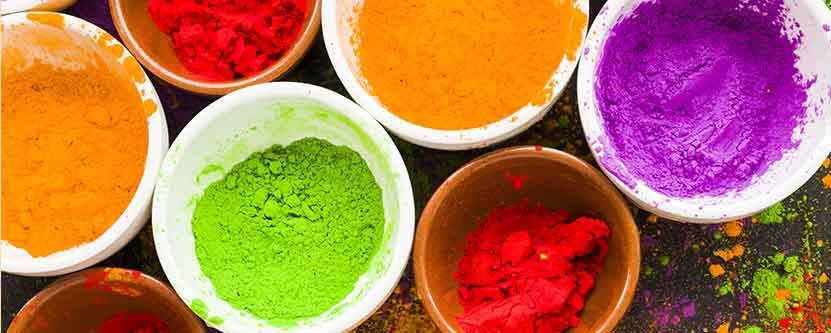Traditionally, holi was played with natural colors and flowers. With urbanization these natural colors are being replaced by cheaper and easily available synthetic dyes, introducing more intense and variety of colors but putting You and your child at more risk in the bargain.
[the_ad id=”6287″]
Red color contains mercury based compounds; green contains copper sulfate; malachite green, blue has cobalt, methylene blue, etc. The metallic colors are even more dangerous containing lead, aluminium, etc. Silica or asbestos is used as a base for the dry colors and are cancer causing agents. We don’t want to scare you but you, as parents should be aware what you are dealing with.
If you are Breastfeeding your baby, it is safe to play with organic colors ? However
- Clean and wash off the colors properly before handling your little one. Even a tiny exposure to the color on your body may cause a reaction in the delicate skin of babies
- Avoid bhang laden sweets and drinks, it can enter the breast milk from your blood and cause intoxication in the babies
- It is best to keep the baby indoors as powdered colors thrown in the air may be inhaled and cause breathing problems in the baby
- Loud music may disturb the baby and make them irritable and anxious
- Dress your baby completely and avoid application of colors to your baby, maybe keep rose petals to shower on the baby or a small sandalwood tikka may be applied to just keep the traditions of the festival
- Keep your baby away from buckets/drums of water and do not leave them unsupervised
PREPARING FOR HOLI:
- DO NOT LEAVE THE LITTLE ONES UNATTENDED EVEN FOR A MINUTE, especially near buckets of water, water bodies. Drowning is a real hazard
- Avoid use of loose colors sold on the street, use safe and organic colors. Avoid use of dark colors and metallic colors completely. Children can help in preparation of their own “Holi” colors from natural and safe ingredients such as beetroot or hibiscus flowers (red), turmeric(yellow), spinach(green), sandalwood powder, flowers (e.g. marigold, rose petals)
- Apply coconut oil, petroleum jelly or moisturizer to your child before playing Holi. This might help reduce the absorption of color to some extent. It will also make it easier to take the color off afterwards. Also, apply oil to the hair so that residue from the dyes does not get stuck to your hair and scalp
- Use full sleeved clothes so as to minimize exposure to colors
- Keep a bucket or two of plain, uncolored water handy, for emergencies
- If your child accidentally gets color in her mouth, wash off immediately with lots of water, ask them to gargle with clean water if possible. Avoid giving salt water to induce vomiting in children. Watch for vomiting, stomach pain, breathlessness thereafter. See your doctor if any of the above
- If color enters the eyes, wash thoroughly with clean water, do not rub the eyes. If any pain, irritation persists, see the doctor immediately. In case of injury due to water balloons, do get your little one to the doctor immediately as the eye may seem normal externally even in case of internal injury
- Child safety: Instruct the children to avoid wandering away or going with strangers
- Teach them not to forcefully put color on unwilling people, pets or babies. Teach them proper use of water guns or pichkaris
POST HOLI:
- After Holi, take a bath as early as possible. Use a normal bathing soap. Longer the contact with colors more is the risk of allergies
- Avoid using detergent, spirit, nail polish remover, kerosene or acetone to remove the colors. These are strong irritants and would aggravate skin damage
- Use a good moisturizing cream immediately after the bath because the colors and prolonged contact with water dry out the skin
- Restrict going out in the sun for long periods with the color on, aggravates the skin damage
- Consult your doctor if you see any rashes or any skin irritation
Source:

